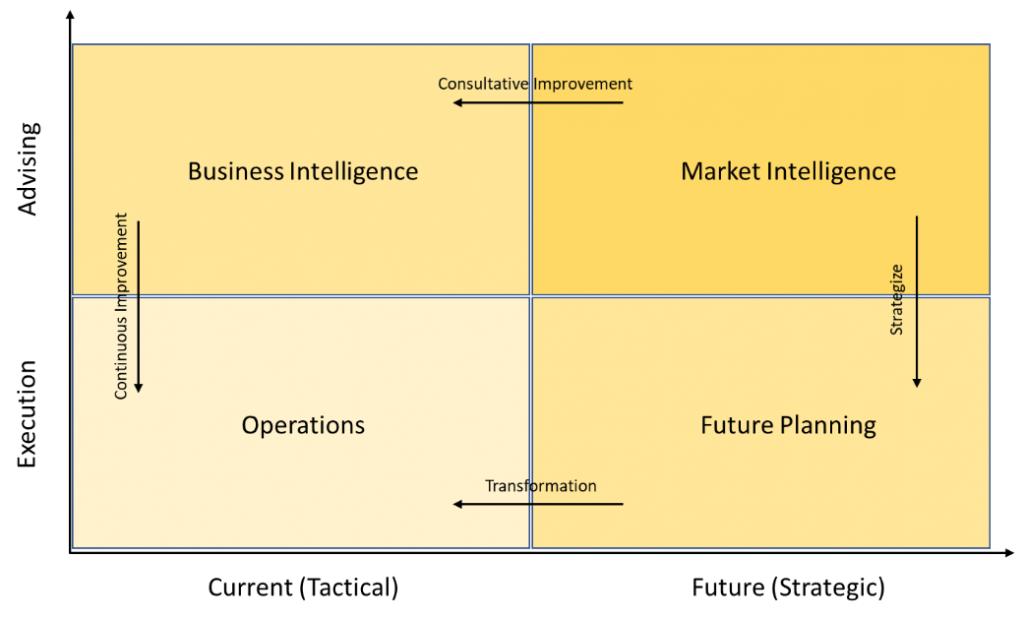A very astute McKinsey consultant once told me,
Anything important can and should be represented by a two by two matrix, as it makes the thought process simpler, and decision making easier.
I don’t know if this is a “mantra” for McKinsey as a company, or just for that consultant, but I do know that this approach has greatly influenced me as a technology leader.
As a CIO, we are often faced with the responsibility of evaluating a myriad of companies that provide IT services. These companies provide various kinds of IT services such as customer service, technical support, application development, maintenance or network monitoring, etc. Since these providers skillfully contribute similar services to many different clients, they have developed economies of scale which make them very efficient and economical across their customer base. Hence, they are used by the majority of large or medium-sized enterprises.
These providers are called Vendors, Service Providers, or Partners. While these three names are often used interchangeably, they aren’t actually all the same.
Then what exactly is the difference between the three?
And more importantly, how should these providers aspire to become more valuable to their clients?

In the matrix above, the X-axis represents the time benefit of the service is provided to the client (current or future service). The Y-axis represents the type of service provided – execution or advising.
Every provider can be classified into one of the four quadrants – Operations, Business Intelligence, Market Intelligence, or Future Planning.
- The first quadrant to examine (Operations) is when a provider delivers the service at the immediate and current time. This is the foundation of service delivery. If this basic level of service is not being met by the provider, then all further discussions are off the table. For example, if support calls from end users are not being answered at an agreed level of responsiveness (speed to answer) and effectiveness (resolution rate) then the provider is not even meeting their operational commitments.
- The second quadrant (Business Intelligence) is when the provider uses the data from the current execution to advise the client on how to improve the service levels. To use our support example again, is the provider performing the call volume analysis to tell the client that “calls are being dropped because of higher than normal volume on calls due to Windows Modern build deployment?” Or is the provider advising the client on how the situation can be improved and then working with the client to improve the situation? Both performing the analysis and improving the services based on the findings are critical.
- The third quadrant (Market Intelligence) is when the provider uses their knowledge of the industry to shape the future of the service provided to the client. Do the providers use their economies of scale, reach of multiple clients, and knowledge of the industry to bring state-of-the-art solutions? Sticking with our example, does the provider tell the client that, as the younger generations are getting into the workforce, the need for an electronic channel of support (chat or video) is becoming critical? Then, is the provider implementing the changes that the client should follow to prepare for the future?
- The fourth quadrant (Future Plan) is when the service provider is shaping the future of the execution of service. Does the provider have a plan to change the service in the next six months or a year? If so, what are the changes? Do the end-users know what is coming? Do the end-users expect the same changes?

Vendors
All providers of service have to be, at the very minimum, in the first quadrant. This is the ticket to entry. They must use Key Performance Indicators (KPI) to measure the Quality of Service (QoS) and set a Service Level Agreement (SLA) to put thresholds on what QoS is acceptable. Providers who perform at this level may be referred to as Vendors. They provide the service requested, then measure the QoS to achieve or exceed the SLA, and that is all. Vendors provide an acceptable level of service. I would frame this as “not bad.”
Providers must start doing two additional things to improve their relationship with the client. First, they must have a plan of how the service will change in the future, which also needs to be communicated to the client and their end-users. Then, over time, the future plan must become reality with the client and the providers working together. The process of turning plans into reality is called Transformation.
The second item the vendors must do on an ongoing basis is to analyze the data accumulated by execution and then get on a path for continuous improvement. They must consider what issues are occurring the most often? Why do these issues happen? What can they do to remove these issues?
The provider needs to evolve into the second quadrant. For example, a support provider did an analysis and told their client that 30% of the support calls were to reset passwords. Of course, a website existed for end-users to reset their password; however, end-users found it more comfortable calling for help. So, the provider advised us to add a fingerprint scanner on the laptop keyboard. From that point forward, the end-users never forgot their password. Less pain for end-users and fewer volumes to deal with for the service provider.
Service Provider
When a vendor starts using Business Intelligence for continuous improvement of their service level and creates plans to transform their service to achieve higher quality, then they get to becoming a Service Provider. Then, for the client, the service is a Black Box service. They do not need to worry about QoS, continuous improvement of QoS, and creating plans for ongoing improvement of their service level. Then, the client can focus on their core business because the Service Provider is providing a good service.
Partners
The final and desired level of service is when providers can be considered Partners. I often tell all of our providers – “you provide IT services to many clients, but we see that service only from one provider. Hence, you must know the industry way better than we will ever know.” These providers can bring the strategies, industry trends, and futures to the clients, as well as workshop the ideas into the Transformational plans and provide a state-of-the-art level service. The service providers who see the industry in a broader way and in more than just the context of the current client can bring consultative improvement ideas and feed the business intelligence engine to produce more continuous improvement. Then you have a partner working with the client to provide an amazing level of service.
In Summary
The naming of a provider as a Vendor, a Service Provider, or a Partner is not just a label. It is the level of relationship that a provider and their client should aspire to work closely to achieve. If a provider is a true Partner, then the client can dedicate more of its resources to enabling the core business, which in turn could also generate more potential business for the provider. Moreover, the provider is much more adept at proving services to begin with, so they can provide a much better quality of service that will open more doors for them in the future.
My wish is that more providers could become Partners and allow their clients to focus more on business enablement. It would be a win-win situation for both parties!










